- Sun. Jun 1st, 2025
Classic Cars, Movies, Music, and Other Stuff ...
Remembering the Triumph Herald, and Other Cars
Here we go with another batch of cars I want to remember, appreciate, ‘collect’ on my blog site, without incurring the overheads of actually owning any of them. This time, we are remembering the Triumph Herald, Subaru XT, Fiat 124, Chevrolet Impala, and…?
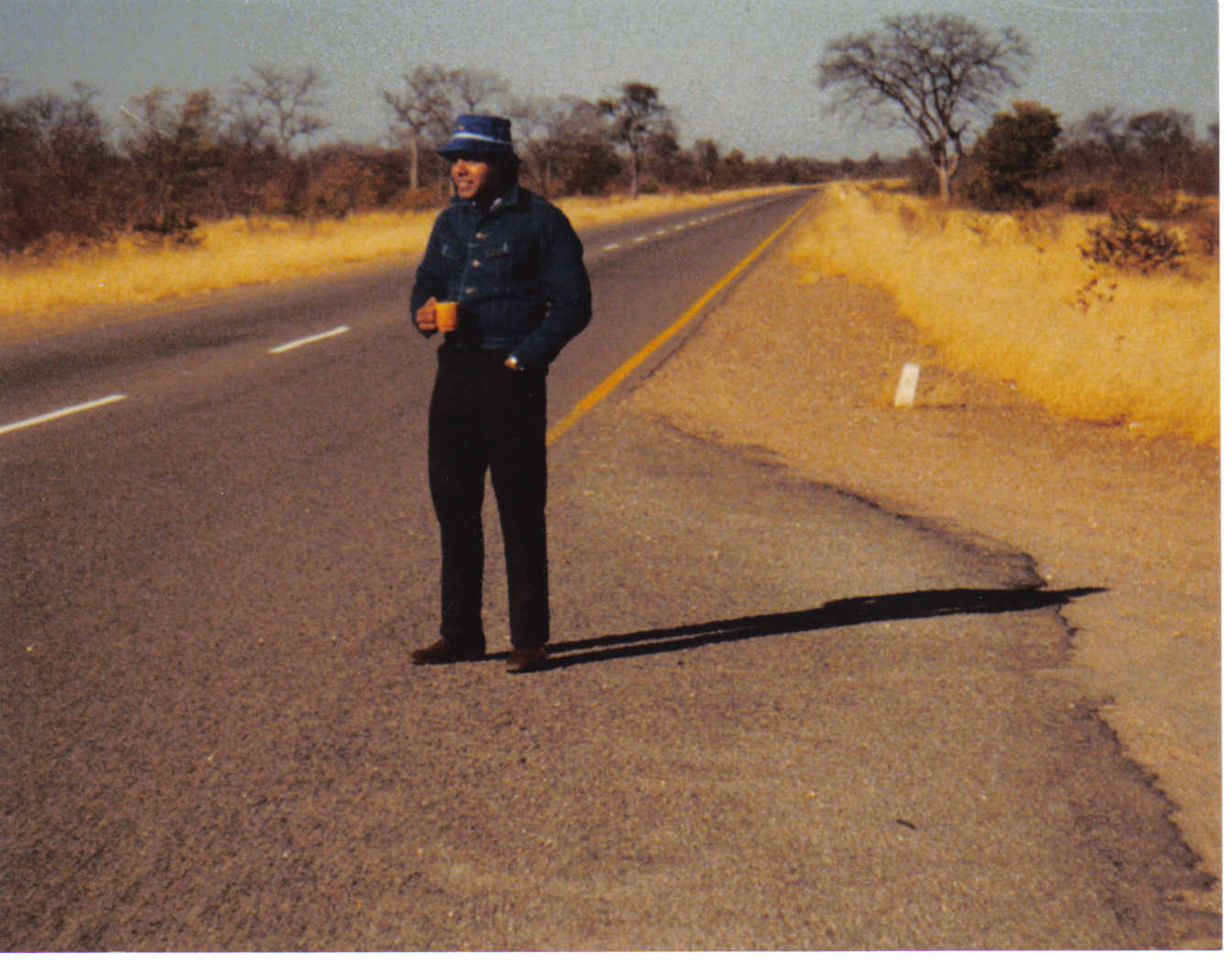
Thapson
I’m not a seriously technical guy so I try to avoid going into those details unless it’s absolutely necessary, and also to keep things as simple as possible. Just the car, my experience (if any), why it’s worth appreciating, and the bare specs. Just the opinion of a basic Joe Shmoe – and that would be yours truly! And let’s start off with a car my friend’s dad owned.
” I especially liked the way the hood would open up to reveal the engine in its entirety for easy access.”
Triumph Herald (1959-1967)
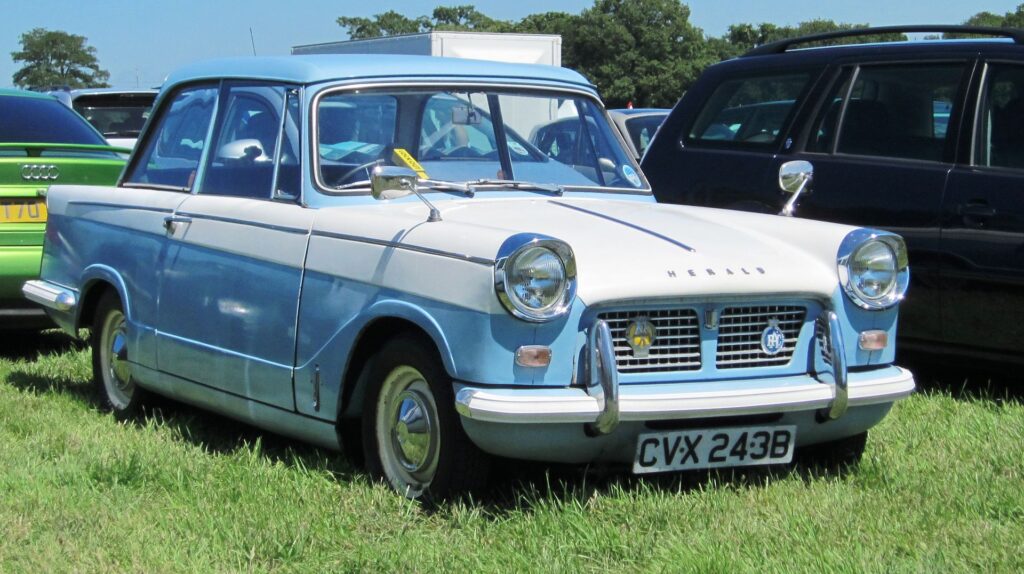
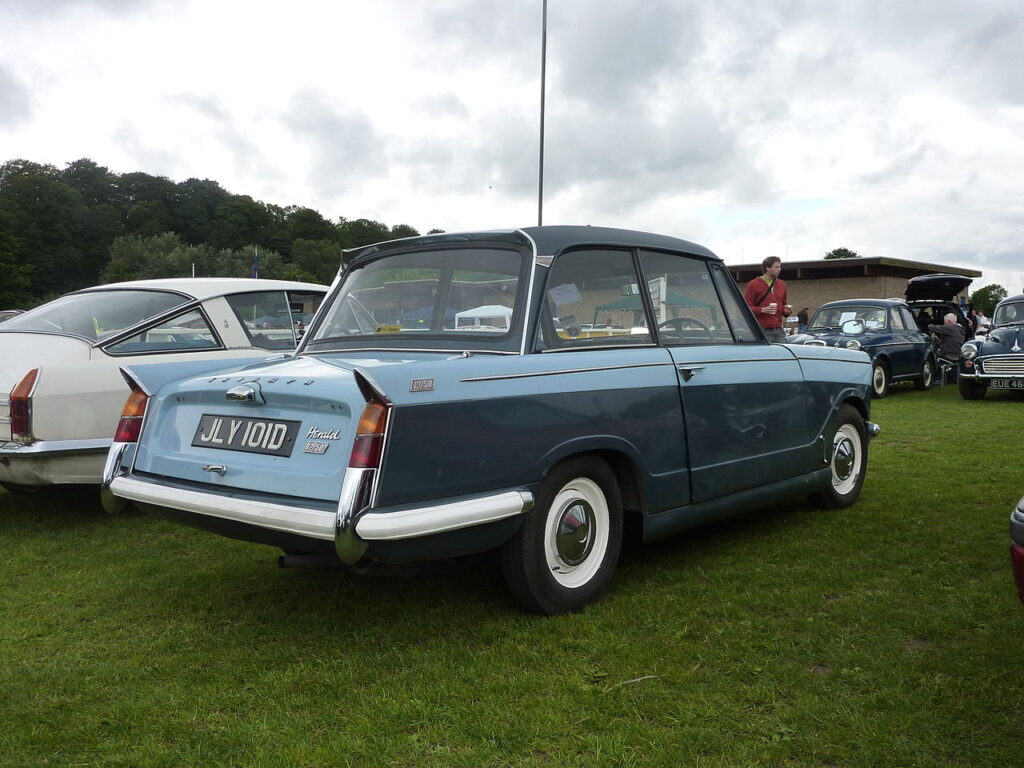
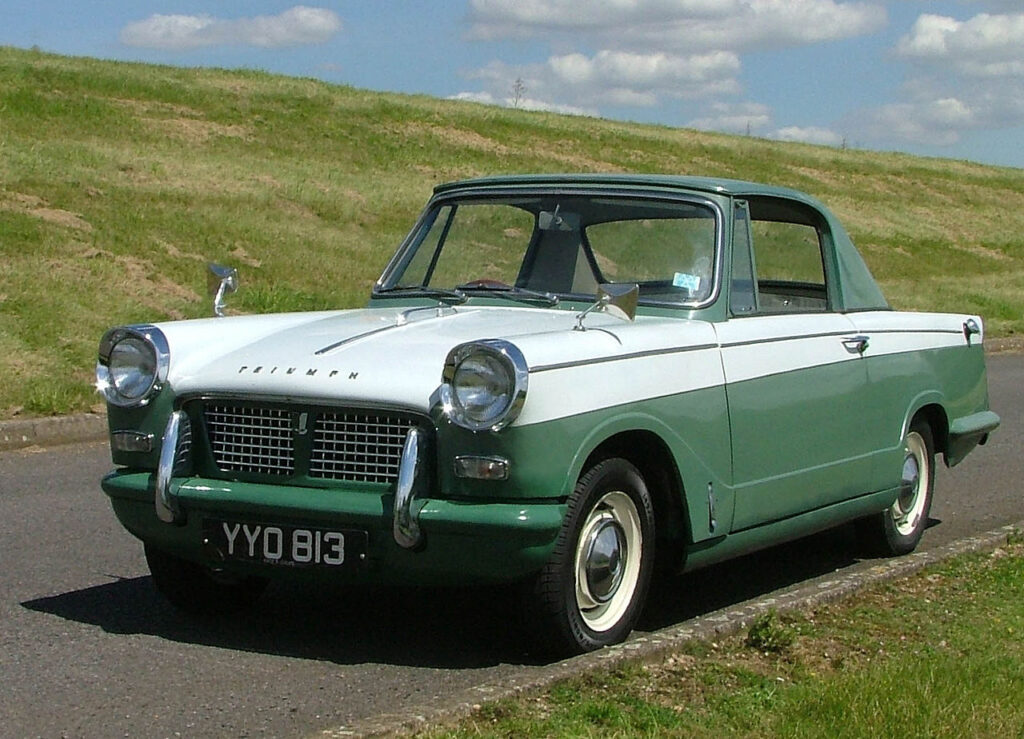
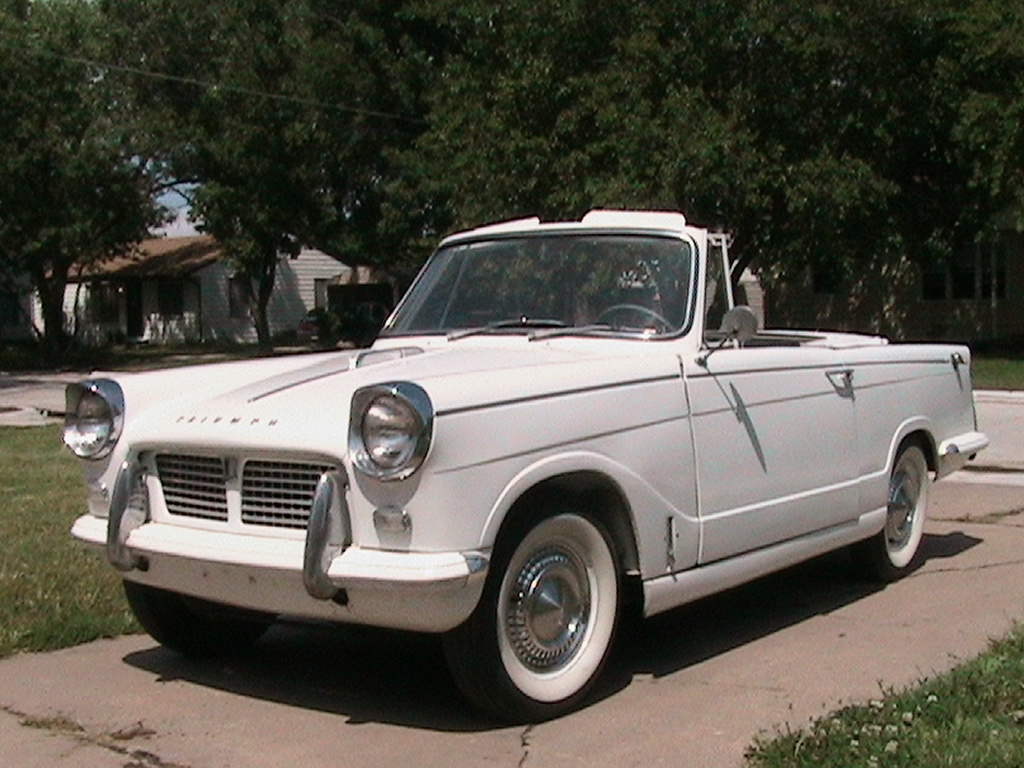
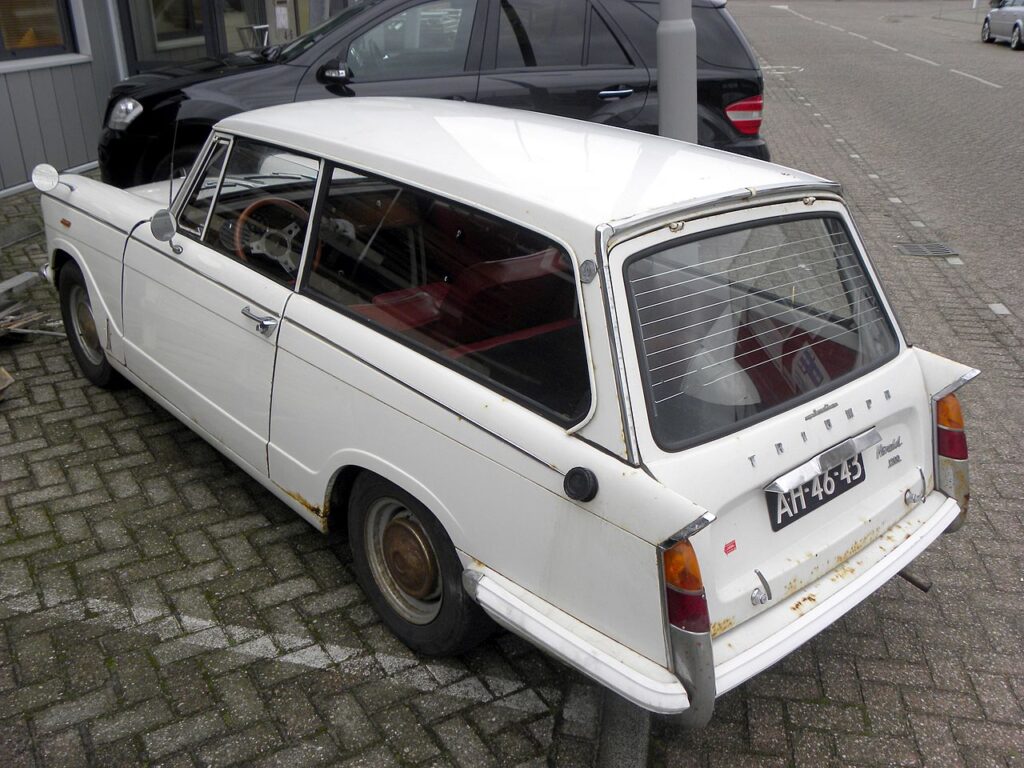
The “Italian Hand”
The Triumph Herald while quintessentially a British car, was designed by Italian Giovanni Michelotti. He had quite a name in auto design back then. It was made by the British Leyland Motors. My friend’s dad had one in British Racing Green back in the late 60s – and he was very fanatical about it. It was always fun to hear him say how his Triumph Herald could do major damage to other cars if they should bump into it’s pointed edges and ‘large’ bumpers. The hard rubber bumpers were quite unique for that time. I especially liked the way the hood would open up to reveal the engine in its entirety for easy access. Because they loved their Triumph, it was always shining inside and out.
A Very British Look
There was a of wood used on the dashboard. It gave the car a typically classical British look. Classic in the sense that as we went into the 70s this car retained a charm despite new cars appearing on the roads. As I have already mentioned, I prefer the look of the 59-67 model years. This was known as the 12/50 or the 1200. In 1967, Triumph gave the car a facelift (the 13/60) which I felt mellowed down its unique looks.
Nick Price / YouTube.com
Configurations
It came in a 2-door sedan, 3-door estate/courier, and also a convertible version. The engine size ranged from around 950 cc through 1200 cc, and was only available as a 4-speed manual. These cars were also manufactured in India (as ‘Standard’), and Australia. A small car for sure, but so unique looking that they’re definitely classics. In fact, I loved this look so much, I bought a model kit back in 1980 only to gift it to my friend who had it back in the late 60s through early 70s.
Subaru XT and XT6 (1985-91)
From 1985 to 1991, Subaru came out with a very stylish looking vehicle which I thought was out of this world. Subaru had left Africa to concentrate on the North American market and I got to see what they were offering when I came over in 1986.
While there were a variety of Subarus on the road then, the XT and XT6 were in a league of their own in looks.

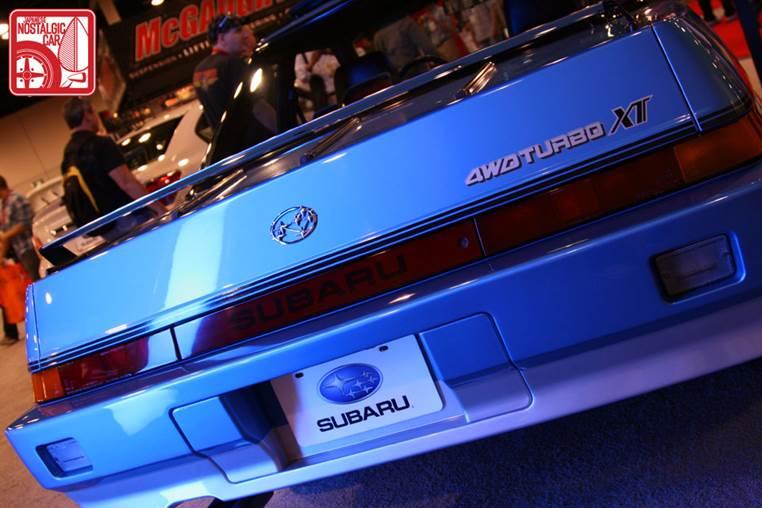

The Subaru Difference
Look at design of this car and you see why it stands out. Subaru was already famous for being different from the other more conservative Japanese manufacturers at the time. Until, I believe 1988, they offered both front wheel and 4-wheel drives. This model was initially only available as FWD with an optional 4WD. Also available was a turbo model for the 4-cylinder version. As implied, the XT6 is a 6-cylinder model. While they stood out externally, their interiors too resembled a cockpit with the top tier having digital read out and more display options, and a cool shift lever that resembled a joystick.
Configurations
These only came in a 2-door version. The engine was available as a 4-cylinder 1.8 Liter (with a turbo option), and later in 1988 as a 2.7 Liter 6-cylinder XT6 version with various mechanical upgrades. Despite the cool design and interesting Subaru technology, which included the ‘boxer’ engine, this model never reached a high level of popularity. It’s said its relatively low power output, especially in the initial models, was primarily to blame.
Subaru XT Commercial / LuxuryCarsOfficial – YouTube.com
But one thing’s for certain: The Subaru XT and XT6 definitely added “pizzazz” to the roads then. Since so few of these were sold, having one gave one a sense of cool individuality.
Fiat 124 (1966-74)
We used to joke that the Fiat 124 resembled a ‘soapbox’ due to its overall boxy design. But make no mistake, this car was far from a joke. This was a very successful car for Fiat from its inception in 1966 right through much of the 80s due to its popularity throughout the world. And it was definitely quite beautiful in its own way. In fact all Fiat (and Italian) cars at that time had a distinctive look to them.
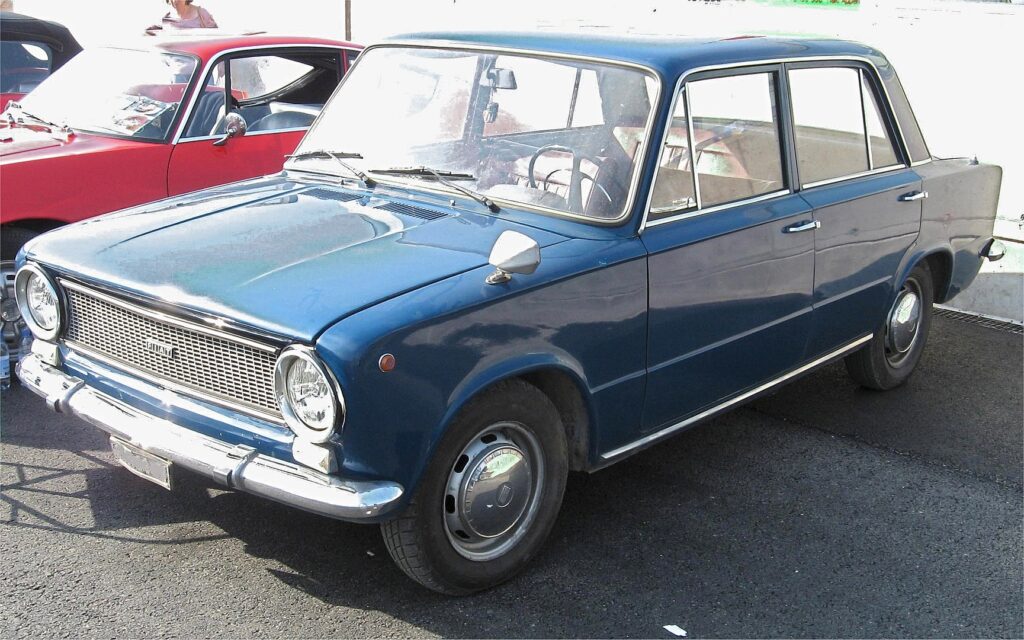
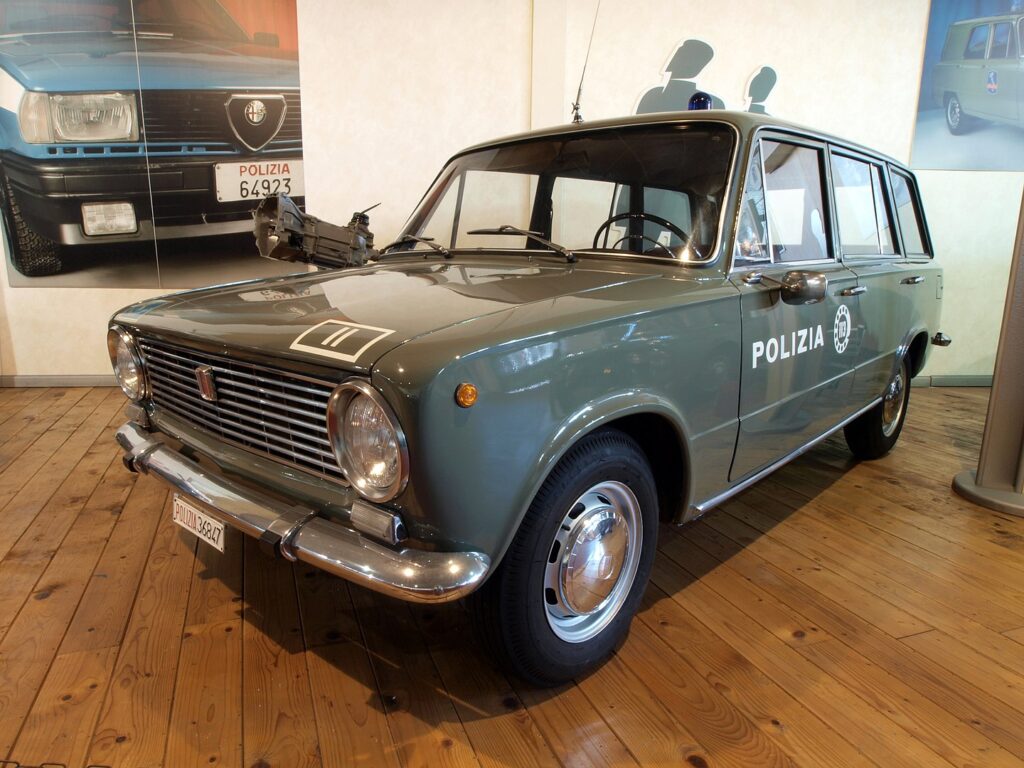
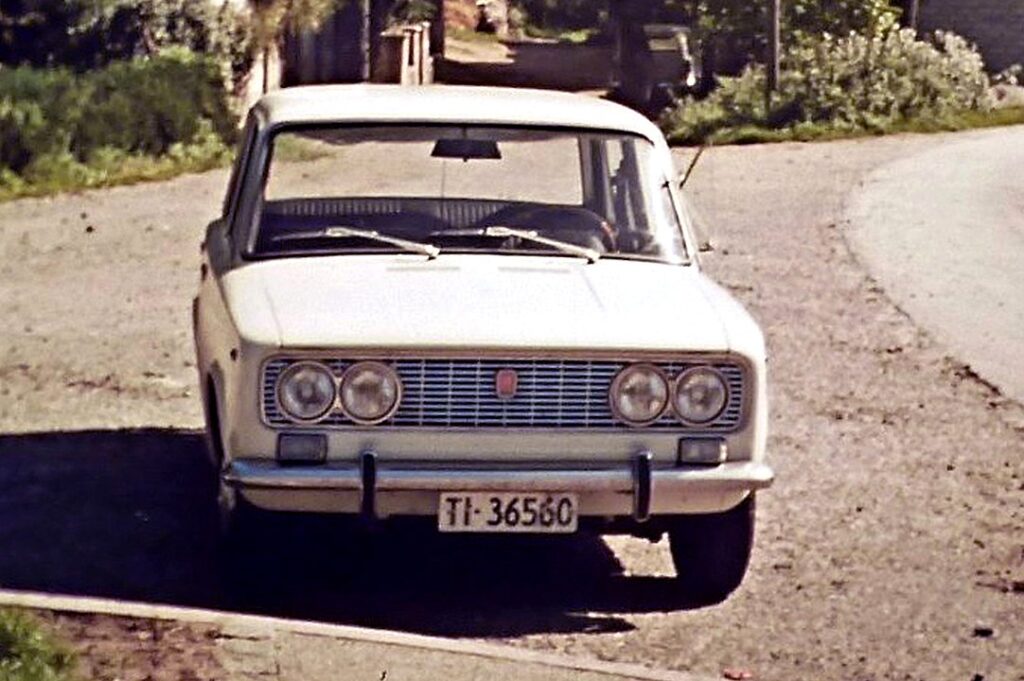
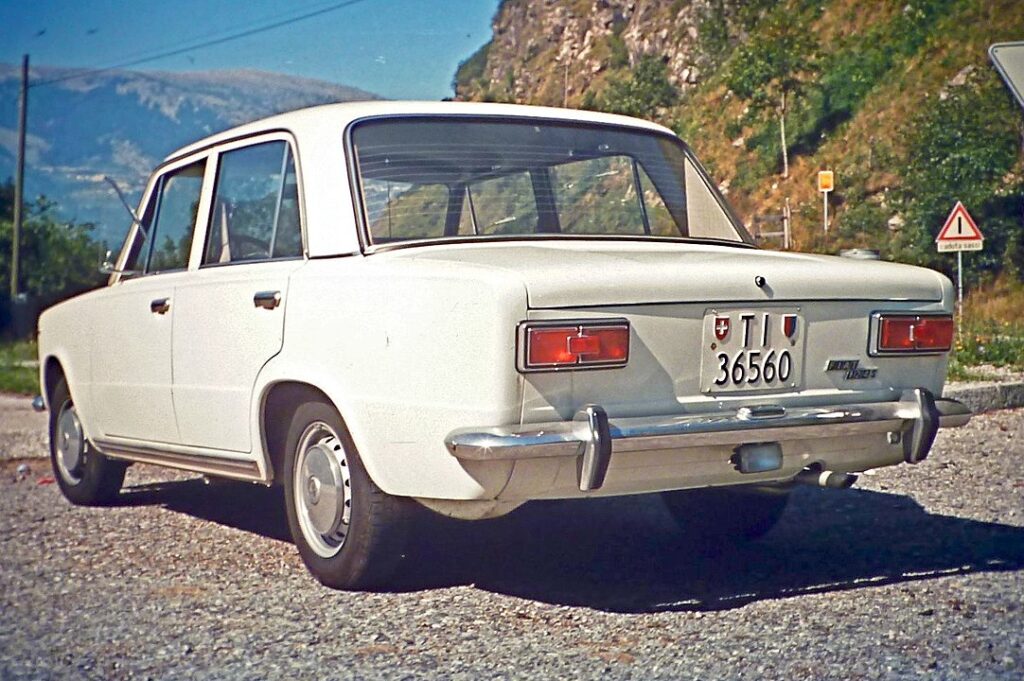
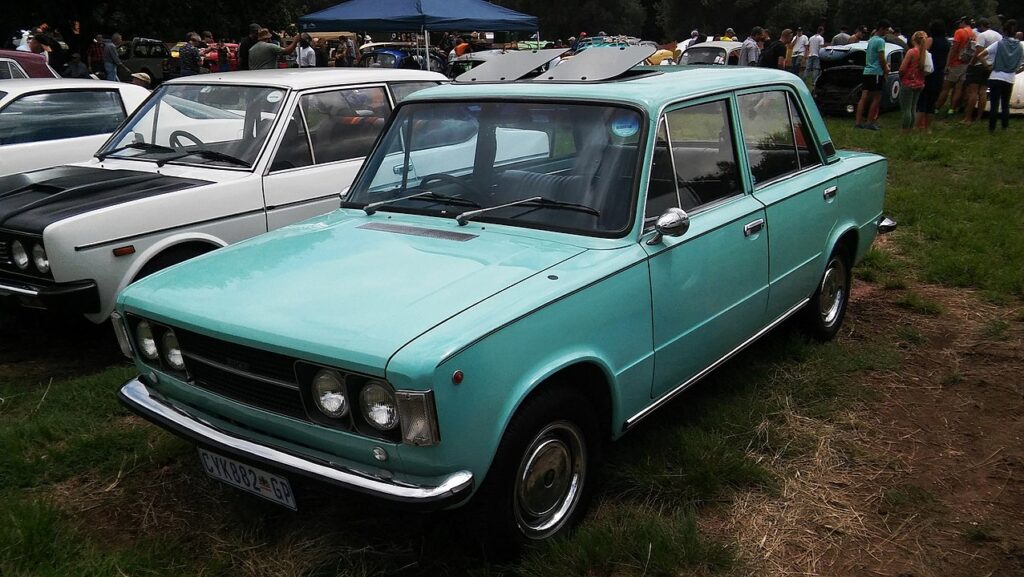
While I’m only familiar with the 1400 cc version, the Fiat 124 was available in a wide range of engine sizes from 1200 through 1800 cc. It was available in sedan, station wagon, sports versions. The sedan was likely only available in the 4-door format.
The Models I’m Familiar With
I’d like to talk about the version that I am most familiar with. And that would be the one that was made under license in Zambia. This was the Fiat 124 and the 124 Special. Both of these had the same 1.4 Liter engine. The only difference was the better trimming including double headlights, improved grill, redesigned bumper, and reverse light on the ‘Special’ version. Both 124s had an interesting throaty sound which lent them a sporty implication. This car was very spacious (due to the boxy design) and comfortable in the inside. The dashboard had well designed ergonomic look. Sure, it wasn’t a luxury car, but for an everyday family/commuter vehicle, it fit the bill well. Along with a large trunk, it’s all round visibility was superb.

Source: ClassicCarCatalogue.com
An International Hit For Fiat
With all these factors + ample ground clearance, this car was popular in many countries as it seemed to tolerate a lot of heavy use. So, it wasn’t surprising to note how many countries made it under license from the parent company FIAT. In South Africa, they also made the Special T version with a 5-speed gearbox.
This car dominated Zambian roads in the 1970s and was eventually succeeded by the 131 Mirafiori.
Chevrolet Impala (1963-64, 1968)

I love the Chevrolet Impala for the model years 1963 through 1964, and 1968. Why 63-64? Because I’m kind of weird. No, actually because this was my first American car up close and it was like seeing a Hollywood star in person. I was too young to remember which model but going by my research, it was definitely a ’63 or ’64. This car was big as in BIG for me. Just the mention of the US as a country was awe-inspiring then. I knew they made big cars because that’s just “what Americans did”.
Lister’s Impala
On the Air Force base back then, there was an RAF man by the name of Lister who owned one of these in white. It was a sight to behold as he thundered by on the gravel road kicking up dust in his wake. The twin headlights, straight lines, and the triple round lights at the back with the long-elongated trunk added to the spectacle. In fact, the round lights at the back of Chevrolet cars were a brilliant idea and is what made them stand out forever. For me personally, the ‘triple’ round ones were especially synonymous with Impalas. Lister was leaving and had put up his Impala for sale and I secretly wished my dad would buy it. No such luck.
Fell In Love Again
Shortly thereafter, I got to see the 1968 model and fell in love all over again. In school, a kid’s parents would drive up in another huge American car that was shiny metallic green. As the car drove up, I would hear the unmistakable heavy ‘murmur’ of an 8-cylinder American motor. With its wide, long stance as the car rolled up, it seemed to warn the other vehicles to step aside and make way for the ‘big boy’ coming up. As it turned its back to me the first time (I would like to think purposefully), I caught site of those unmistakable triple lights recessed in the bumper! This time they were set deep inside the rear bumper. The profile had a more flowing design. I already knew and simply read off the name tag which confirmed I was looking at the latest version of the Chevrolet Impala!

Chevrolet gave up on the round lights on the Impala rear-end after 1968 which I feel messed its uniqueness. As we all know, they did bring back the round lights in the 2000s, but alas, there were only two of them and the overall design was nowhere near the persona I feel that an Impala should project. Hence only the 1963-64 and 1968 Chevy Impalas for me please.
1963 Chevrolet Impala Promo Film / Sports Car Illustrated – YouTube.com
1968 Chevrolet Impala Commercial / Jonathan Froes – YouTube.com
A Special Place For Me
Did I mention that despite the size, Impalas while available in 4-door format, were often 2-door – a reflection on American individuality? Also, they mostly came in 8-cylinder but were also available as ‘puny’ 6-cylinder versions. The old Impala will always hold a special place for me as it’s the first American car I saw up close.
To close off, let’s touch look at my interesting (I’m going to avoid ‘quirky’) car of the moment. And this time I refer to:
The Mazda R360 (1960-66)

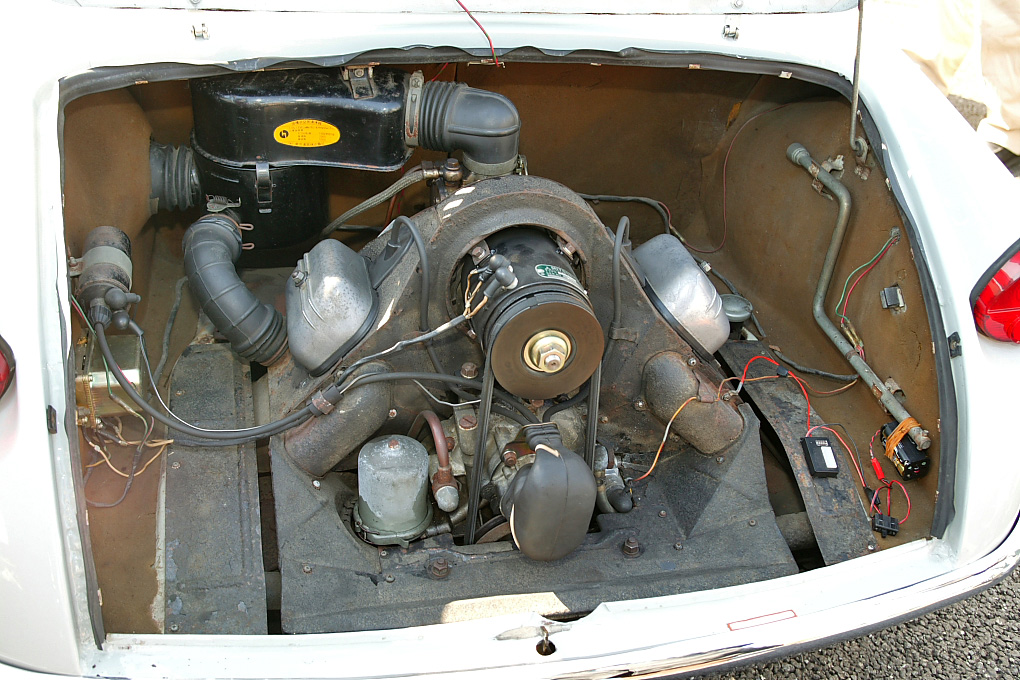
The Mazda R360 was the first car that company manufactured back in 1960. Produced until 1966, the R360 was a ‘Kei’ car which refers to the minimal size a car can have in Japan to be permitted on the highway. The Japanese have a penchant to be frugal and get the most while utilizing minimal resources. And in this endeavour, they specialize in designing things small, efficient and versatile. Due to this philosophy, they tended to specialize in fuel efficient cars.
Looks Familiar?
One can’t help seeing a resemblance to the Subaru 360 I’ve already talked about in one of my previous posts. I suspect there may actually be a relationship between the two. Hey, but I’m not a conspiracy theorist and believe the Earth is round. The R360 had a rear mounted, air cooled 356 cc engine (in case you wondered where on earth they got that name!), 4-speed manual, or 2-speed automatic(!) transmission. Despite this small size, it was capable of a whopping 84 Kph and seat 4 people. Although I wonder if the speed was achieved while seating 4 adults. The R360 was only the first of the offerings from Mazda which was later succeeded by other designs which brought them further successes. So next time you can proudly state where the origins of Mazda lie.
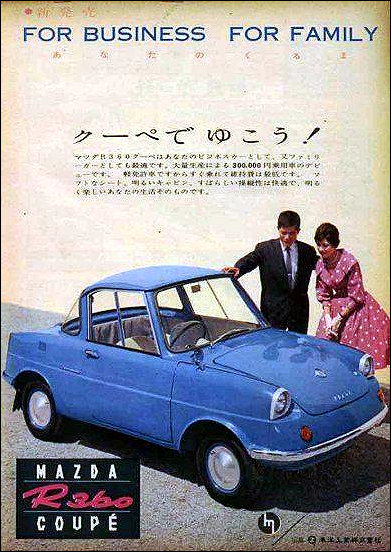
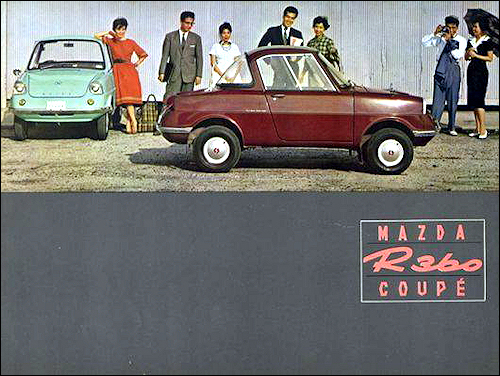
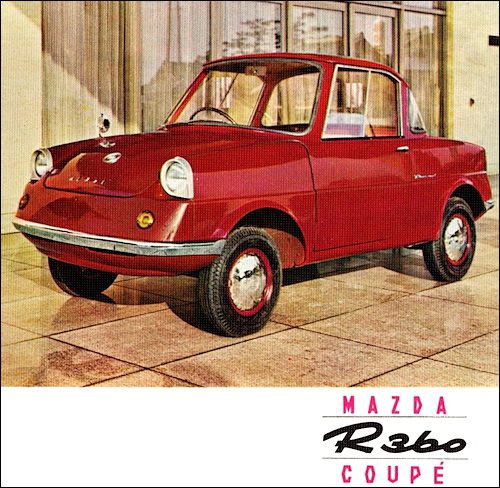
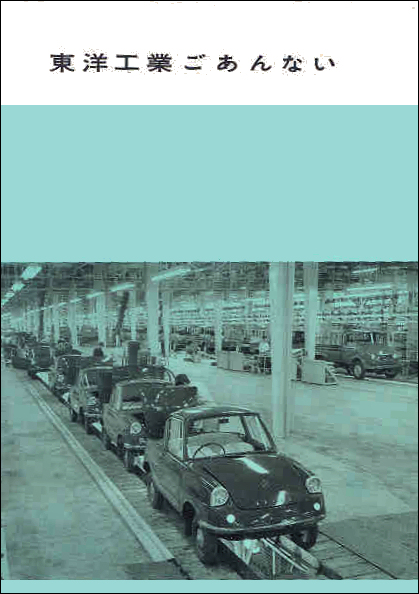
Mazda R360 Japanese Commercial / mizmag360 – YouTube.com
Despite its oddity, the R360 is a fine testament to Japanese ingenuity and efficient design that was to help them take on the world in the coming decades.
And this was our look at some interesting classic cars worth remembering for this time. I’ll be back back with more stuff next time. Until then, safe driving and be sure to check your tire pressure every two weeks despite the Tire Pressure Sensor as those things are not completely trouble free either.
Last Three Posts under ‘Auto’
Checking Out The Cars of Our Lives 3
Checking Out The Cars of Our Lives 2
